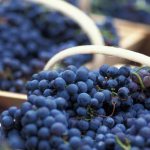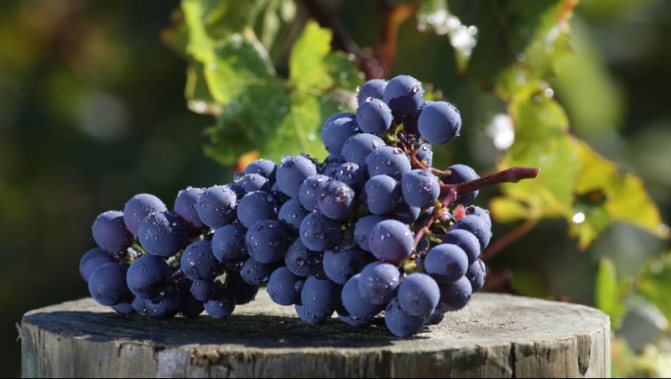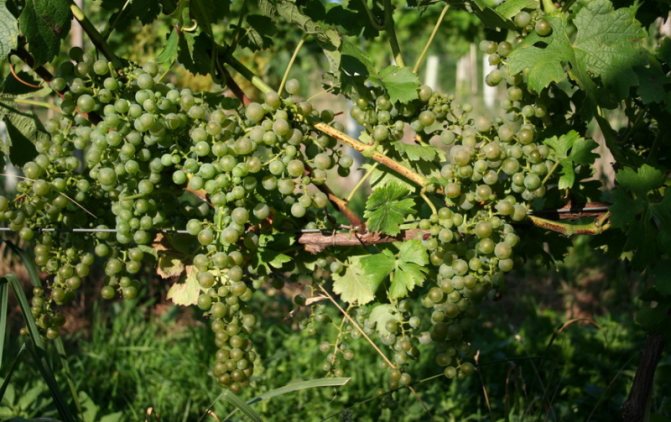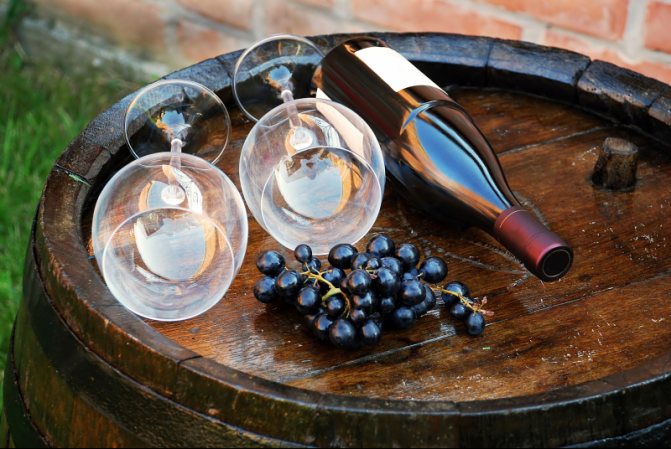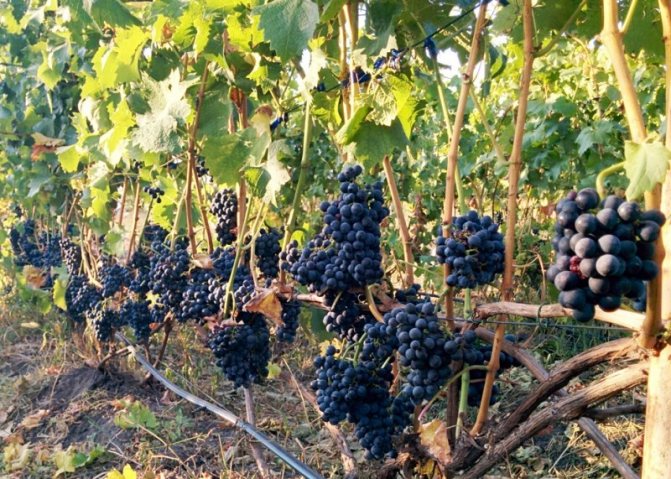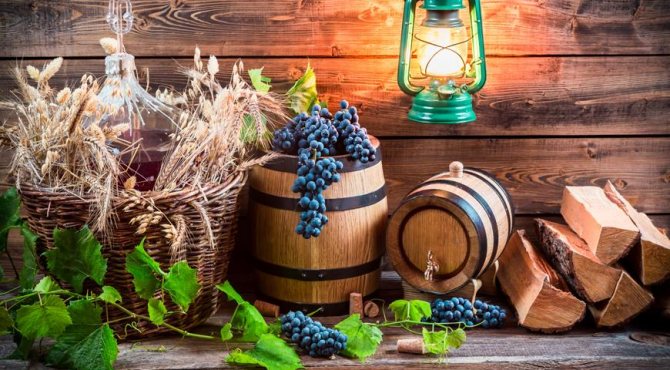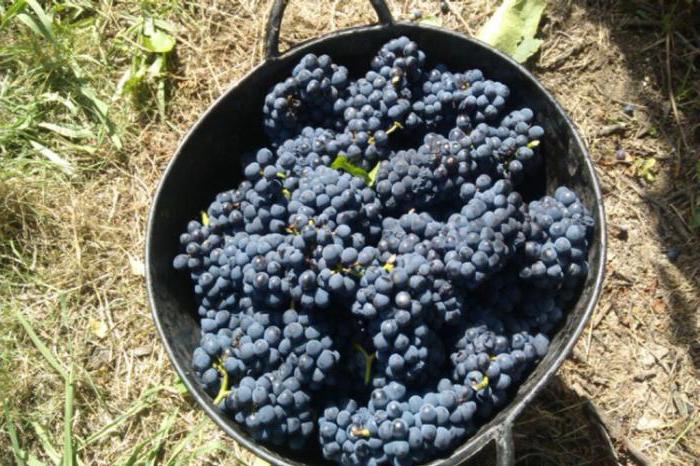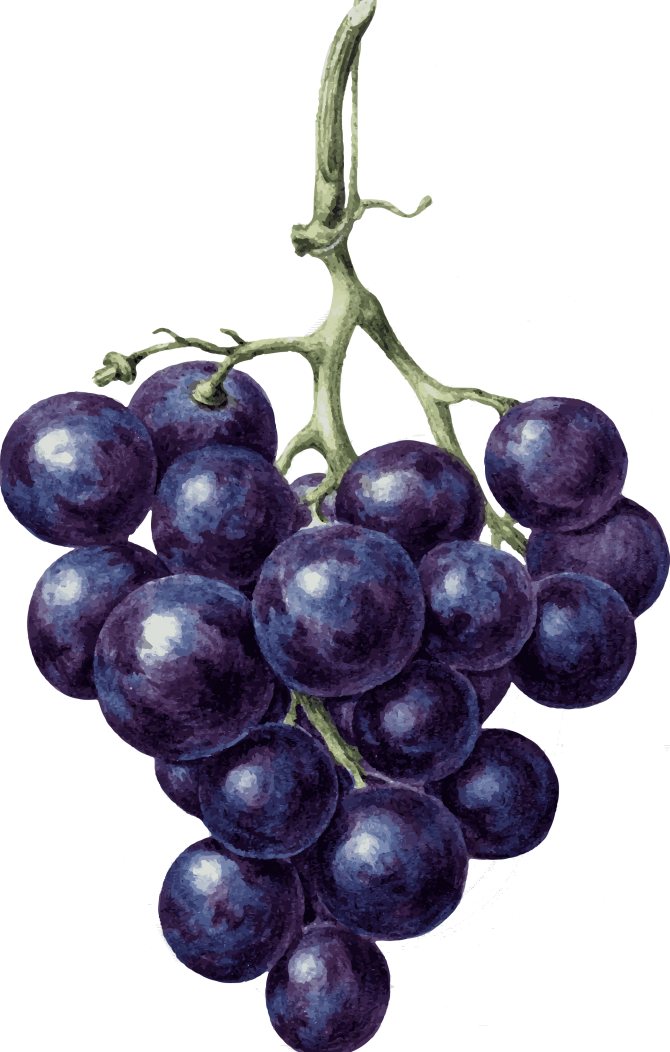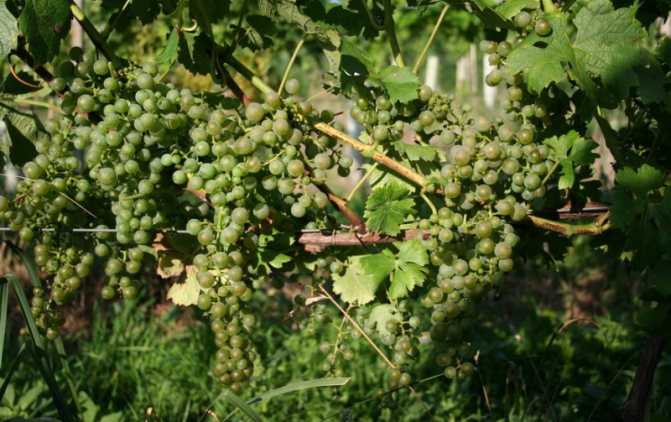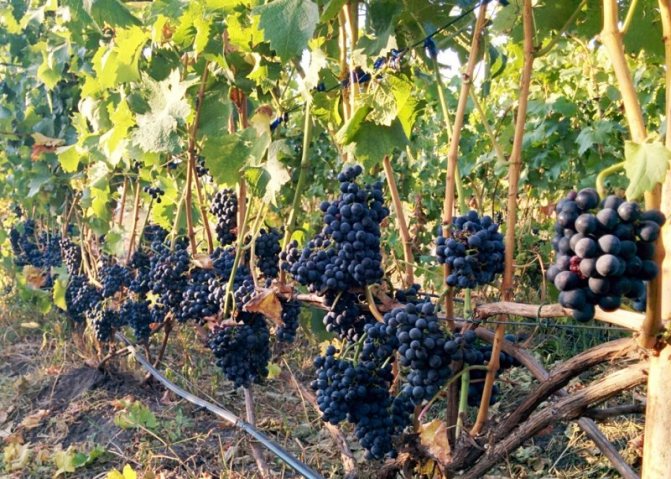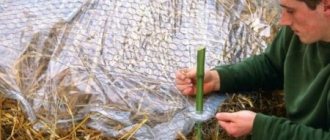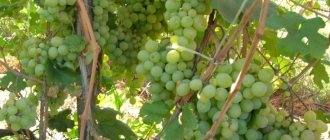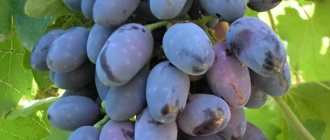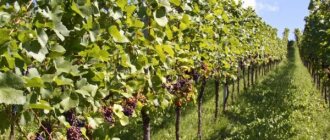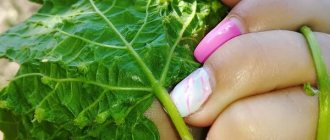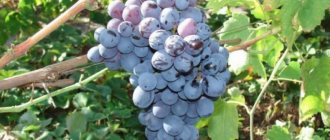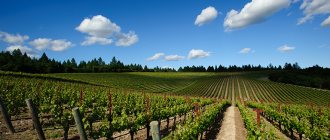Everyone knows about dry red cabernet wine: even if someone hasn't tasted it, they have at least heard about it. This intoxicating and tasty drink is made from grapes of the same name - Cabernet Sauvignon. Grapes of this variety are grown exclusively for the production of high-quality wine - it is not suitable for fresh consumption.
In the article, we will consider the features of the cultivation of this agronomic culture: we will find out its technical and external characteristics, we will get acquainted with the nuances of planting and care. And also we will find out what opinion domestic winegrowers have about this variety.
Description of the Cabernet variety
Cabernet Cortis grapes are called an early variety that ripens earlier than Cabernet Sauvignon or Pinot Noir. It takes 4.5-5 months from the beginning of the growing season to harvest. Although, when compared with table varieties, the ripening period is not a record one.
Experts note that the Cabernet Cortis grape variety does not have a tendency to pinch. The formation of stepchildren is rather weak, but their number depends on weather conditions and soil fertility. It is impossible to predict whether these extra shoots will appear on the bushes, so you need to prepare for the fact that sometimes you will have to carry out additional pruning.
Stepsons should be removed without fail, but annual shoots should be trimmed carefully. The vine is shortened, leaving at least 5-6 buds. And this is done only if it is required to improve the quality of the crop. Excessive pruning will not lead to anything good and will only weaken the bush. It is still not recommended to remove the leaves unnecessarily, otherwise the amount of sugar in them will decrease.
Bunches of this variety are prone to peas. Even though the flowers of Cabernet Cortis are bisexual, this is not enough for full cross-pollination. It is recommended to carry out additional manual pollination. To do this, using a soft and dry sponge, pollen is collected from the bushes and mixed in one bowl. And then inflorescences are processed with this pollen.
Unfortunately, this method is usually only suitable for small farms. For large vineyards, it is advisable to plant nearby bushes of various varieties. Pollination with pollen of another variety always benefits the crop.
| Assignment of the variety | wine |
| The acidity of the variety | 5-6 g / l |
| Sugar content of the variety | 19 — 21 % |
| Bunch shape | conical |
| Bunch size | 15x8 cm |
| Berry shape | round |
| Berry color | deep purple |
| Berry size | 1.5cm in diameter |
| Taste | with notes of black currant, tobacco, dry herb and green pepper |
| Ripening period | 138 - 141 days |
| Yield per hectare | 80 - 150 centners |
Grapes, of this kind, are grown for making wine. Because of this, it received the name technical or winemaking. The variety originated from the natural crossing action of grape varieties such as Cabernet Franc and Sauvignon Blanc. There are many types of Cabernet, but the most famous are Savignon, Fran, Cortis.
The fruits are black, dark blue or purple. They are collected in large clusters and have an elongated stem. Each bunch is about 15 cm long and up to 8 cm wide. As a rule, the bunches are cone-shaped and have a small branch at the top. The berries are round and of medium density, covered with a light waxy bloom.
The Cabernet variety has one characteristic feature. Its berries have a specific smell, reminiscent of nightshade. The smell remains in young wine, but over time it disappears, but leaves a pleasant aftertaste.
Grape flowers are bisexual and experienced growers, it is recommended to additionally pollinate the bush on their own.
Useful video
This common grape variety has many synonymous names even in France, depending on the area. It can be called bouchet, breton or cabernet gris, to name just a few of the regional names.
Cabernet grapes (more precisely, Cabernet Sauvignon) are one of the most famous black grape varieties in winemaking. Surprisingly, there are many different but equally great red wines made from this grape variety.
If you find an error, please select a piece of text and press Ctrl + Enter.
Cabernet Sauvignon grapes are extremely popular in the world winemaking. From it, unusually tasty and rich in color wines are obtained. It includes several varieties. Each variety adds exclusive flavor notes and incredible aroma to the wine. Depending on the growing conditions, the characteristics of the area and the specifics of aging, the aroma and taste of the wine changes.
Description of external signs
The apical part of the young shoot is yellow in color with a lemon tint and a raspberry border. Cabernet Cortis has leaves of large to medium size, medium-sized, divided into three lobes. The leaf blade has irregularities, from above it is reticulate-wrinkled, and from below the surface is covered with thick and soft (tomentose) pubescence.
For a complete picture of what grapes look like, a description of the bunches is necessary. The bunches are not distinguished by their large size and mass, they have an average density and a cylindrical-conical shape. The grapes are medium-sized, they are characterized by a rounded shape and rich purple color. The rather thick skin is covered with a thick prune bloom. The pulp of the berries is slightly slimy, juicy.
Reviews about grapes
The grape variety Cabernet Sauvignon, the characteristics of which were given above, the quality is simply excellent. Therefore, reviews about him on the network are extremely positive. From the berries of this grape, just an excellent wine comes out - spicy, tart, pleasant to the taste.
Actually, this variety itself received recognition not only because it can be used to make such an exquisite drink. The growers speak of him as very unpretentious and fruitful. When grown, this crop is practically no hassle. The only thing, the Cabernet Sauvignon grape variety is desirable to periodically process from spider mites and from itching. In this case, it is recommended to use standard insecticides.
Of course, this grape is cultivated not only in an industrial way. Summer residents also grow it in their suburban areas. If you wish, you can also make wine from it yourself.
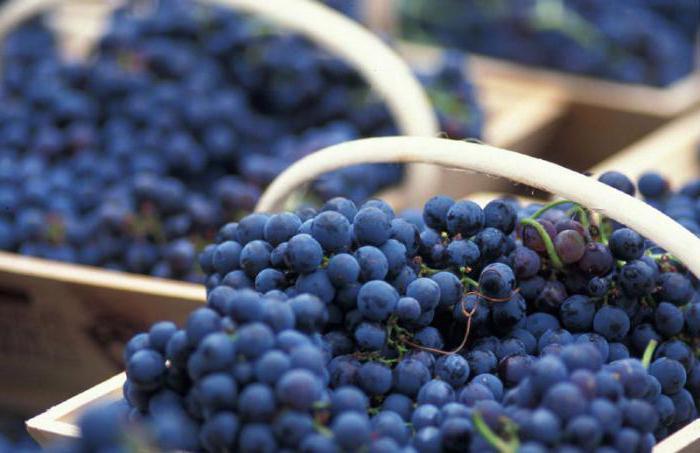
Main characteristics
The ripening period of Cabernet Cortis berries is rather short - from 130 to 148 days after bud break. Fruits quickly gain sugar, the values of which vary from 19 to 21%. A characteristic property is that the acidity remains stable as the berries ripen and decreases slightly.
Cabernet Cortis is a wine grape of early ripeness. Cabernet Cortis grapes originated in Germany in early 1980, by crossing Cabernet Sauvignon and Merzling. This species is classified as a Western European variety. It is often grown in Switzerland and Germany.
- This variety ripens quickly. Dates range from 138 to 141 days.
- The bunches are not large in size, and they are not too dense and full.
- The berries are round in shape and have a deep purple hue.
- The average sugar content of the variety is 19–21%.
- Cortis has an average yield of about 80–150 c / ha.
- This subspecies is resistant to many diseases and pests. It perfectly tolerates gray rot and mildew.
- The grapes tolerate severe frosts and drought without any problems.
- It retains little or medium formation of stepchildren, it all depends on the soil and climatic conditions.
Read more: Grapes The Mystery of the Monk: description of the variety, characteristics, photo
Cabernet Cortis wines are of high quality, unique dark red color, rich in phenols and retain a strong aroma. The taste contains notes of black currant, tobacco, dry herb and green pepper. This wine will satisfy the taste buds of even the most demanding sommelier.
The Cabernet grape is a technical variety and is grown for the production of red wines. Found massively in most countries with warm climates. Under unfavorable growing conditions, it is prone to shedding flowers, but mainly has a stable yield.
Appearance
The deeply cut, dark green leaves are the hallmark of the Cabernet grape. The height and spreading of the bush depends on the characteristics of the variety.
Bunches
Bunches of Cabernet grapes are predominantly conical in shape with a long stem. The length is in the range of 12-15 cm. Each bunch weighs no more than 150 grams.
Dark berries are covered with a light waxy coating and dense skin. Despite the rich color, their juice is colorless and occupies about 80% of the total volume of berries. The diameter of the berries is 1.5 cm.
The harvest ripens on the 140-160th day, however, to obtain a rich wine, it is harvested much later.
Frost resistance
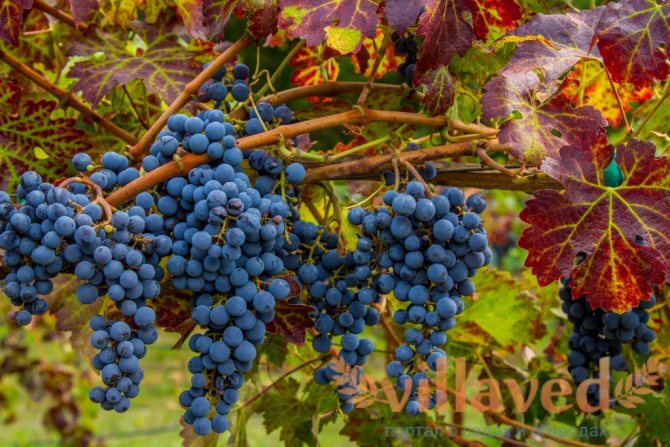

Depending on individual characteristics, the variety thrives at low temperatures in the range of -22-26 ° C. In southern regions, it is often grown without shelter.
Yield
Cabernet grapes do not differ in volumetric yields. The yield is average or below average. Its size depends on the region of growth and is 60-160 centners per hectare. Crop volumes are highly dependent on varietal characteristics, care characteristics, growing region, weather conditions and the presence of pollinators.
Transportability
Due to its thick, dense skin, it tolerates transportation well and is a marketable product.
The breeders carried out intensive work on the breeding of resistant varieties. Cabernet grapes and their many relatives show increased resistance to most common diseases. The exception is the individual characteristics of the variety. However, grapes are susceptible to fungal diseases and rot.
How to plant and care?
In order for Cabernet grapes to give a rich harvest, it is necessary to prepare the right soil. With regard to weather conditions, it is important to protect these grapes from gusty winds. This recommendation is especially important if the wind is blowing from the North. It is best to plant the plant in mid-spring or mid-autumn. It is very important that the plant has sufficient watering.
If you want the harvest to be especially rich, then the shoot, which is important for one year to cut off to 5-6 eyes.
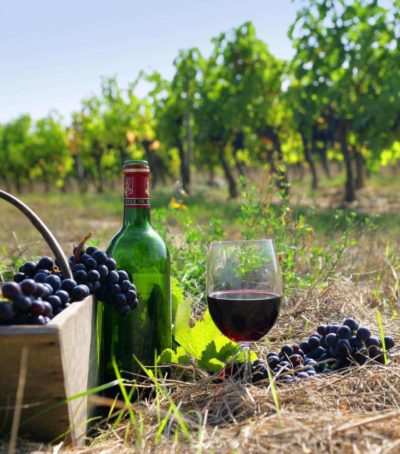

A great variety of wine varieties are made from Cabernet grapes.
Its recognized characteristic is to change the bouquet and taste of the wine depending on the area where it is grown., and from changes in exposure conditions.
The quality of the wine is strongly influenced by the chemical composition of the soil and weather conditions.
It is about this amazing grape variety that we will talk about today in more detail.
In this article you will find not only its description, but also a lot of other useful information.
Cabernet Sauvignon has long been considered a classic in winemaking. His homeland is Bordeaux, France.It was from here that this magnificent grape spread all over the world: today it is grown, in addition to the countries of Western and Eastern Europe, in Australia and the USA, Argentina and Chile, Japan and South Africa.
Equally famous wine varieties are Merlot, Syrah and Riesling.
Planting and care: description
Cabernet Cortis seedlings have fairly spreading shoots, this must be taken into account when choosing the distance at which the bushes will be planted. Before planting seedlings, it is important to remember that grapes are very sensitive to soil. It is necessary to prepare the ground in advance. Experts recommend planting young grape cuttings in early spring or in the second half of autumn.
Such a process will have a beneficial effect on the entire shrub. Although Cabernet varieties are quite resistant to pests, it is important to inspect them regularly and sprinkle them several times per season for prevention.
Read more: Top dressing of grapes in spring: how to fertilize after opening for a good harvest
Cuttings can be planted both in autumn (preferably in the second half) and in early spring. It is advisable to plant in well-prepared and moist soil. The plot should be well lit and protected from the cold wind. When planting, it must be remembered that the shoots of this grape grow quite widely.
Cabernet grapes are unpretentious to the soil when planting, but wetlands require good drainage. The seedling takes root well in a new place, regardless of the planting time.
He does not need further scrupulous attention: it is an excellent option to try his hand for novice gardeners.
Top dressing
In the first years after planting, the grapes are not fed with anything. The necessary microelements introduced into the soil during the preparation of the planting pit are quite enough for him.
You can saturate the grapes with organic matter by filling the root zone with mulch from rotted manure or diluting it in water and combining it with autumn watering.
Grapes need periodic watering, but excess moisture negatively affects its development.
Waterlogging during ripening causes the berries to become watery, so you should not overfill the plants. High humidity often causes the development of fungal diseases.
During the season, the grapes are watered at least three times, focusing on the weather conditions. In the case of a winter with little snow and dry soil after the spring melting of snow, the grapes need abundant watering. Watering must be repeated before flowering and in autumn.
Pruning
For Cabernet grapes, formative pruning is practiced. In this case, no more than six lateral shoots are left, the entire remaining part is removed. Such pruning promotes the active development of the lower buds and increases yields. Too busy bush bears poorly.
Cabernet grapes - for exquisite and elite wine
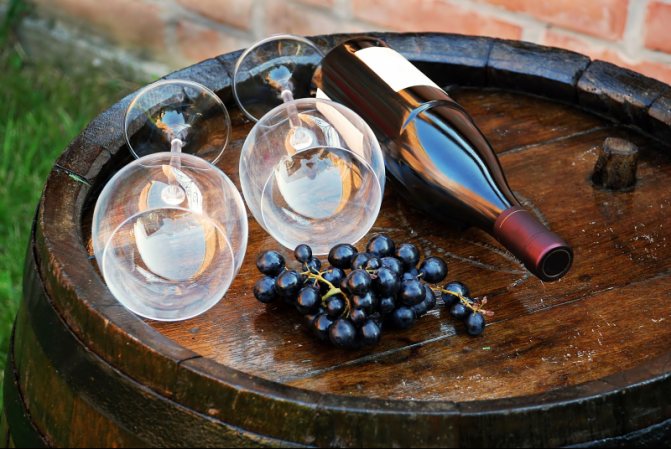

For a long time, breeders have worked to improve the Cabernet variety and the variety of its species.
Wine from Cabernet Blanc has tones of green apple and gooseberry with light floral notes.
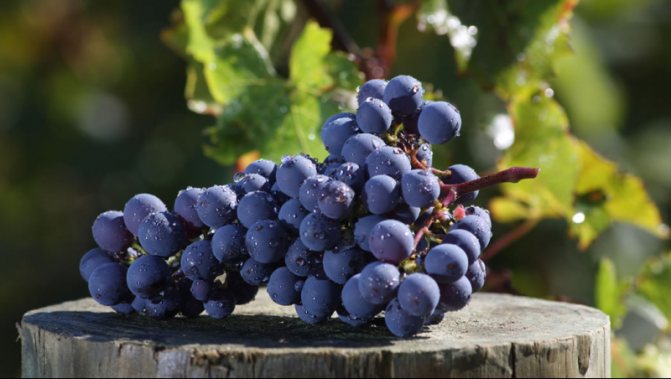

The pulp of the fruit is sweet, the grapes are used both for the preparation of wines and juices, and for fresh consumption.
The variety is more often used for making wine and juices, but it can also be used as a berry. The taste of the pulp is herbaceous.
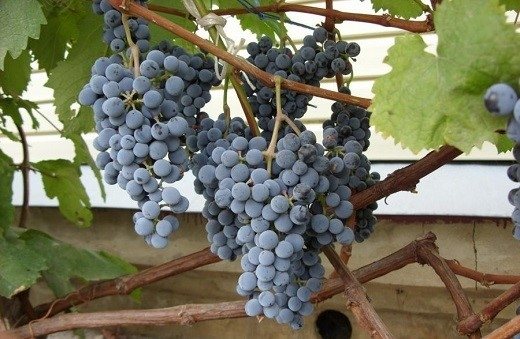

Pests and diseases
There are not many pests and diseases that would seriously harm the vine of this variety. Cabernet Cortis is resistant to fungi, and preventive spraying with fungicides is enough for it. In this case, there is no need to use potent substances.
Of insects, spider mites and leaf rollers should be wary of. Many insecticides are suitable for controlling them. You should choose the substance that is more convenient to use and that is available in the area.For use, you can recommend, in particular, Bi-58, Fastak or Karbofos. All these substances will reliably protect the bush from insects, provided they are used correctly.
Cabernet Cortis has two big drawbacks, but they can be successfully dealt with if the shrub is properly cared for.
- First, it has a tendency to pea. This means that small green berries appear on the bunches. They are pitted and have a slightly sour taste.
- Secondly, during a period of strong wind and other unfavorable weather conditions, the formed ovary can simply crumble to the ground en masse.
However, the problem of peas can be effectively dealt with and a large amount of crop can be saved. Control methods are aimed at pollination of grape flowers in many ways. Some pollination options:
- additional pollination with your own hand;
- the use of dressings with various useful elements (magnesium, boron, zinc);
- careful treatment of the entire bush with a natural growth stimulant (gibberellin).
Of the variety of varieties, only the grape moth, the leafworm, as well as the spider and grape mites, pose a serious danger. These pests can be dealt with efficiently if you adhere to simple rules:
- It is impossible to notice the grape mite, since it is small in size. It leaves behind, on the foliage, swelling of a reddish tint. In order to fight it, sulfuric preparations are used. They are combined with Bordeaux liquid. And the resulting mixture should be carefully treated with the affected leaves.
- The spider mite is much more dangerous. It forms a cobweb on the back of the leaf, which harms the development of the entire plant. To combat the tick, use a 4% soap solution. They need to spray the bush in the spring when buds begin to form.
- The leaf beetle butterfly can be seen on the cobwebs on the berries themselves. In wet weather, moisture accumulates between the fruits, and they begin to deteriorate, and over time they simply rot. To get rid of the pest, insecticides are used. As a rule, they are combined with fungicides and treated with shrubs.
Read more: Piebald horse: breeds, description
Cabernet is resistant to most common diseases. Preventive treatment of bushes will help prevent the unpleasant consequences of fungal diseases. It is performed in early spring and autumn with various chemicals.
A four percent soap solution, which is sprayed on the bush or wiped on the leaves, will help to avoid the use of chemicals on fruiting plants.
Dangerous for the variety:
- grape mite;
- spider mite;
- leaf roll.
Let us dwell in more detail on the methods of dealing with these insects.
Grape mite
Numerous raised areas on the leaf plate indicate the settlement of the grape mite. He pierces them and salivates. A white fluff appears on the back of the sheet, which subsequently turns red. If you do not take any measures, already in July you can observe the defeat of the entire bush.
Affected leaves require removal and burning. The bush is sprayed with sulfur-containing preparations at least twice, carefully treating both sides of the leaf.
Spider mite
When the garden is massively populated, the spider mite braids the grape leaves and causes irreparable harm to the plant. Severely damaged parts of the plant are cut off, and the bush is thoroughly sprayed with soapy water.
Leaf roll
The leafworm butterfly loves to spoil the berries. She enmeshes them with a dense web, blocking the access of nutrients. As a result of massive attacks, crops rot.
When infected, insecticides are used. The frequency of treatment depends on the degree of damage to the bush, but more often than four times per season it is not worth spraying the grapes.
Plant care
Based on the feedback from amateur gardeners and people involved in the cultivation of grapes professionally and in large volumes, we can conclude that the Cabernet Sauvignon variety is unpretentious in the care of grapes. Nevertheless, in order to get a good harvest, it is worth following a number of recommendations. Cabernet Sauvignon grapes have many types and subspecies, with different characteristics, so this can be found in various parts of Russia.
Cabernet Sauvignon grapes are not picky about the soil and grows well on a variety of soil types. But there are a number of requirements for lighting. The grapes love sunlight and southern mountain slopes. Naturally, there are no mountains in standard garden plots, so it is advisable to create hills artificially. In addition, so that sunlight is constantly present, the grapes are planted in rows from north to south. This type of fit will also create stable air ventilation.
Cabernet Sauvignon grapes are propagated and grown using a rootstock, that is, by grafting a vine shoot onto the root system or trunk of another plant. The most suitable types of rootstocks for Cabernet Sauvignon grapes are Riparia 3309 and 101-14, Berlandieri Teleki 8B, Kober 5BB.
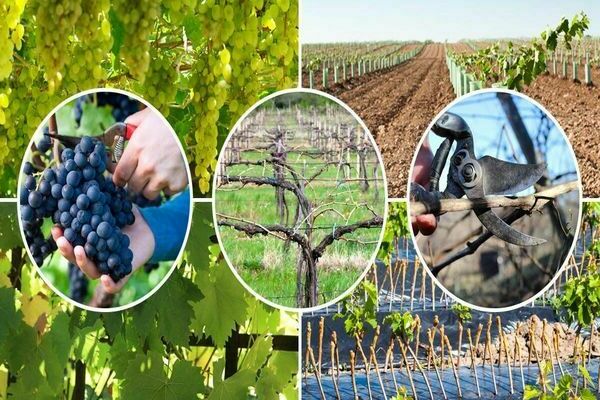

Cabernet Sauvignon grapes: photo of the variety
There are several factors to consider when planting. The first of these is the distance between the rows, it should be about 3-4 meters. It is not worth saving land and making the rows closer to each other, since this distance is optimal for sufficient air circulation, and will also help to quickly eliminate the diseased plant before the disease has moved to neighboring plants. Usually the Cabernet variety is planted in the fall or spring seasons.
It is important to keep track of the frequency and amount of watering. There are no specific recommendations for time and quantity, an attentive human look will only help here. During the growing season of the plant, timely watering is important, as well as loosening the soil and removing weeds. If the period of ovaries does not fall on a period of high temperatures, then it is advisable to spray the bushes. The greatest attention should be paid to watering during the ripening of the grapes. If this period falls on a period of drought, then it is advisable to use root watering so that water does not fall on the leaves and does not harm them. If, on the contrary, there are heavy rains, then you do not need to water the plant additionally. Since the abundance of moisture, the berries can become watery in structure and become almost tasteless.
In the spring, and then, if necessary, the ground is covered with mulch, for example, straw, sawdust, peat, etc. In the cold season, it will help prevent root damage from low temperatures, and at high air temperatures, it will prevent the rapid evaporation of moisture.
Do not forget about feeding the plant for stable growth and development. The vine will accept both organic and mineral fertilizers. Top dressing is usually carried out several times in one season, the last time being in the second half of July. This is due to the fact that from the second half of July, the main flows of substances in the plant are directed to feeding the bunch, and late top dressing can lead to an outflow of nutrients for continued growth and development of foliage, in which case it is not worth hoping for a good harvest.
The first pruning and formation of a grape bush occurs on one-year-old shoots. A short pruning is recommended for young Cabernet grapes, this allows you to increase the yield of the bush, since with this type of pruning, the lower eyes actively grow and bear fruit. Most often, Cabernet is grown on fairly high boles, leaving young shoots hanging down. So that young vines do not grow much, they are shortened by 5-6 eyes. By the spring eyes, you can approximately determine the yield of each bush. Therefore, if it is clear that the yield of the bush will be high, then to reduce the load on the bush, the fruit arrows are shortened.
Description of disadvantages
Despite many of its advantages, the variety still has two significant disadvantages: first of all, the tendency to peas - the formation of small, sour, seedless berries. This process occurs due to insufficient pollination of the plant, especially in unfavorable weather during flowering. The second drawback is the shedding of the ovary of berries, which leads to a significant decrease in yield.
Among the causes of shedding of the ovary, poor pollination is also in the first place. These problems can be partially solved by applying fertilizing that strengthen the bush, and additional artificial pollination. Despite the general good resistance to grape pests, some of them can still harm the plant.
Cabernet Cortis is not intended for table consumption. This variety is specially grown for the production of high quality alcoholic beverages. The wines are well-colored - of a noble dark red color, they are distinguished by the fullness of the taste, extractiveness, and richness of phenols. The bouquet contains light black currant, tobacco tones, notes of dry grass and green pepper.
A bit of history
The popular grape variety Cabernet Sauvignon was developed in France in the 17th century. by the method of folk selection. In this state, it is still one of the most widespread of all technical, industrially grown. At the moment, it is second only to Merlot grapes in popularity. The breeders found out that the Sauvignon Blanc and Cabernet Franc varieties once became parental for him.


Currently, this wonderful grape is grown not only in France, but also in many other countries. For example, farmers in the USA, Japan, South America and the Mediterranean countries are engaged in its cultivation. This grape is grown in Ukraine, as well as in Russia.
Characteristics
The Cabernet grape has many advantages, which makes it popular among winegrowers and winemakers. There are also disadvantages, which will also be discussed.
Pros of the variety
- The grapes are fruitful, with good care and favorable climatic conditions, up to 70 centners of fruit are harvested per hectare.
- Good transportability, since the berries do not burst or crumble.
- The grapes do not crack, even when overripe.
- The rains do not harm the berries.
- An excellent variety for the production of red dessert wines.
- The variety is winter-hardy and drought-resistant.
- The grapes are resistant to many diseases.
- Possibility of peas. You have to spend time pollination.
- The ovaries at the very beginning can crumble from the wind.
- The late maturity of the variety (140-160 days) does not allow growing grapes in any regions of Russia.

